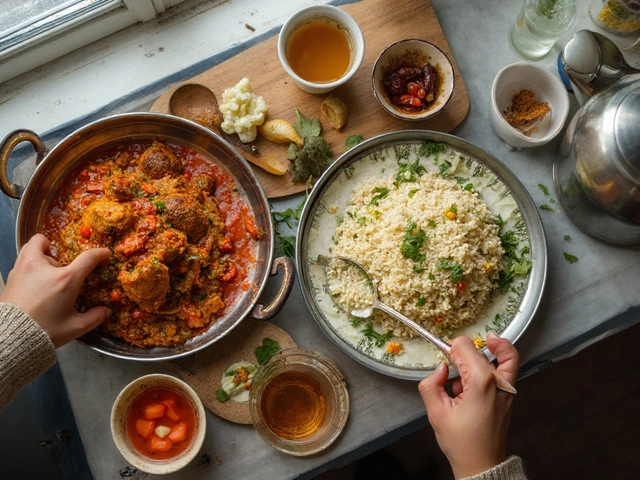Navigating diabetes means understanding what foods and medications could put your health at risk. It's not just about sugar—certain foods, drinks, and even medications can impact blood sugar levels or counteract diabetes meds. This guide breaks down what diabetics should definitely avoid, what to enjoy in moderation, and how certain meds may interfere with diabetes management. With this knowledge, diabetics can manage their condition more effectively.
Read MoreDiabetic Diet Made Easy: Practical Tips for Everyday Eating
Living with diabetes doesn’t mean you have to give up tasty food. A smart diabetic diet focuses on balancing carbs, protein, and healthy fats while keeping blood sugar steady. Below you’ll find simple rules you can start using today, plus Indian‑friendly meal ideas that won’t leave you feeling hungry.
Key Principles of a Diabetes‑Friendly Diet
1. Choose low‑glycemic carbs. Foods like whole wheat, millets, brown rice, and oats raise blood sugar slower than white rice or refined flour. Swap white rotis for multi‑grain or bajra rotis whenever you can.
2. Pack every meal with fiber. Fiber slows glucose absorption. Add veggies, beans, lentils, or a handful of nuts to each plate. A bowl of mixed salad with cucumber, tomato, and carrots adds crunch and keeps you full.
3. Pair carbs with protein or healthy fat. This combo blunts sugar spikes. Think dal with a scoop of quinoa, or fish curry served over a small portion of brown rice.
4. Watch portion sizes. Even healthy carbs can cause a spike if you overeat. Use your hand as a guide: a palm‑sized portion of carbs, a fist of non‑starchy veggies, and a thumb of protein.
5. Limit added sugars and sugary drinks. Replace sodas with infused water, unsweetened tea, or buttermilk seasoned with a pinch of salt and cumin.
Easy Indian Meal Ideas to Keep Blood Sugar Stable
Breakfast: Start with a bowl of overnight oats made with low‑fat milk, chia seeds, and a few sliced almonds. Add a small piece of fruit like half an apple for natural sweetness.
Mid‑morning snack: A handful of roasted chana or a small cup of sprouts salad seasoned with lemon and chat masala.
Lunch: Grilled paneer or chicken tikka with a side of mixed veg stir‑fry (broccoli, capsicum, beans) and a small serving of millets or brown rice. Top with a spoonful of homemade raita for extra flavor.For vegetarians, replace paneer with tofu or a thick dal cooked with minimal oil. The goal is protein + fiber + a modest carb.
Afternoon snack: One small bowl of plain Greek yogurt sprinkled with cinnamon and a few crushed walnuts.
Dinner: Light soup (like tomato or mixed veg) followed by a two‑finger roll of whole‑grain roti, a cup of mixed dal, and a generous serving of sautéed leafy greens (spinach, methi).
Before bed: A cup of warm turmeric milk (use low‑fat milk) can help with sleep and has anti‑inflammatory benefits.
Remember to stay hydrated—aim for 2‑3 litres of water daily. If you’re on medication, check with your doctor before making big changes to your diet.
By sticking to low‑glycemic carbs, adding plenty of fiber, and balancing each meal with protein or healthy fat, you’ll find it easier to keep your blood sugar in check without feeling deprived. Try swapping just one meal a day and notice the difference. Small, consistent tweaks add up to big health benefits over time.





